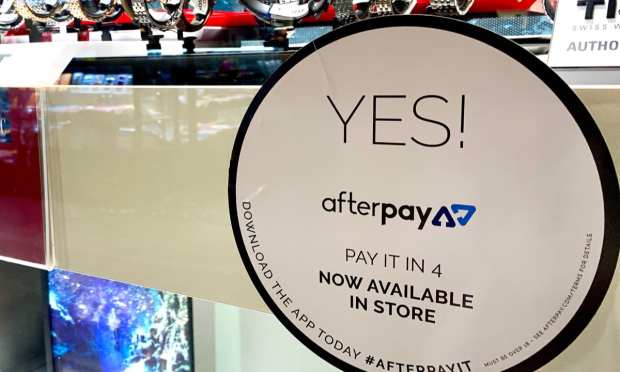Buy Now, Pay Later Isn’t Just For The Budget-Conscious

Popular buy now, pay later (BNPL) services are proliferating and duking it out for share of market as installment payments are dubbed the new budgeting miracle.
One need only peruse PYMNTS monthly Provider Ranking of Alternative Credit Apps to see that chessboard of power players and chart-climbers to get a sense of this kinetic sector.
Along with BNPL goes the idea, supported by some findings though not all, that BNPL users are financially strapped and use these services because they simply can’t afford the merchandise.
PYMNTS January 2021 Buy Now, Pay Later Tracker® done in collaboration with Afterpay, turns that perception on its head, as high-earning millennials are found flocking to BNPL platforms.
“PYMNTS research finds that consumers living paycheck to paycheck are not the only ones who see value in BNPL options,” per the new Tracker. “More financially secure households may still wish to avoid credit card interest fees, for example, and know that some BNPL offerings may charge less in interest or will offer flat late payment fees that could be easier to plan around.”
Monied Millennials Like BNPL, Too
There’s no debating the success of buy now, pay later services, whose draw is so strong that it’s even delivered a steady flow of customers into physical stores during the pandemic.
More than this, and to the aforementioned point, those who favor BNPL are not just the budget-conscious. A great many could buy these items outright. But why not save?
For example, “Afterpay customers have an average age of 33, which is a mature millennial. These millennials are at the beginning of their peak earning potential and represent the vast majority of the spending power in developed markets,” Nick Molnar, co-founder and co-CEO at Afterpay, told PYMNTS. “In Australia, when compared to the general population, 48.8 percent of Afterpay users are in the highest credit score categories and only 0.3 percent are in the lowest score categories. Afterpay customers also have lower personal liabilities. Additionally, Afterpay’s data has shown that older consumer segments are joining the platform — demonstrating that Afterpay is being normalized as a payment option for all demographics.”
Molnar said, “The bigger motivation for the acceleration of BNPL payments is millennials’ clear aversion to financial risk — which is driving a structural shift from the credit economy to the debit economy. Consumers are reaching for their debit cards and avoiding expensive credit card interest and fees — especially for lifestyle purchases. During this [pandemic], we have seen the use of debit cards increase on our platform, with approximately 90 percent of global transactions made with debit cards.”
Savings And Budgeting Combined
A PYMNTS study conducted in early January of nearly 2,300 consumers found that 59 percent were having difficulty meeting expenses, which explains credit aversion among some.
And it is exactly those BNPL terms making it a winner among those with disposable income.
Per the new Tracker, “[BNPL] could appeal to even financially secure consumers who wish to avoid credit card interest rates. Credit cards charge new customers an average of 17.9 percent interest and existing customers 14.6 percent interest, whereas some BNPL offerings charge flat late fees instead of interest and others set their interest rates at anywhere from 0 percent to 30 percent.”
Which is not to say that the financially beset aren’t turning to BNPL. They certainly are.
“PYMNTS’ January 2021 research showed that consumers who are living paycheck to paycheck are more likely to adopt BNPL services. Eighteen percent of financially insecure consumers used BNPL when purchasing online and a little over 11 percent used it in store, compared to the nearly 8 percent and nearly 3 percent of more financially stable consumers who used BNPL online and in store, respectively,” according to the January Buy Now, Pay Later Tracker®. “Shoppers who did not live paycheck to paycheck still make use of BNPL offerings and tend to favor certain providers. Nearly 24 percent of financially secure consumers who use BNPL online turned to provider Afterpay,” as did nearly 10 percent of those living paycheck to paycheck.
